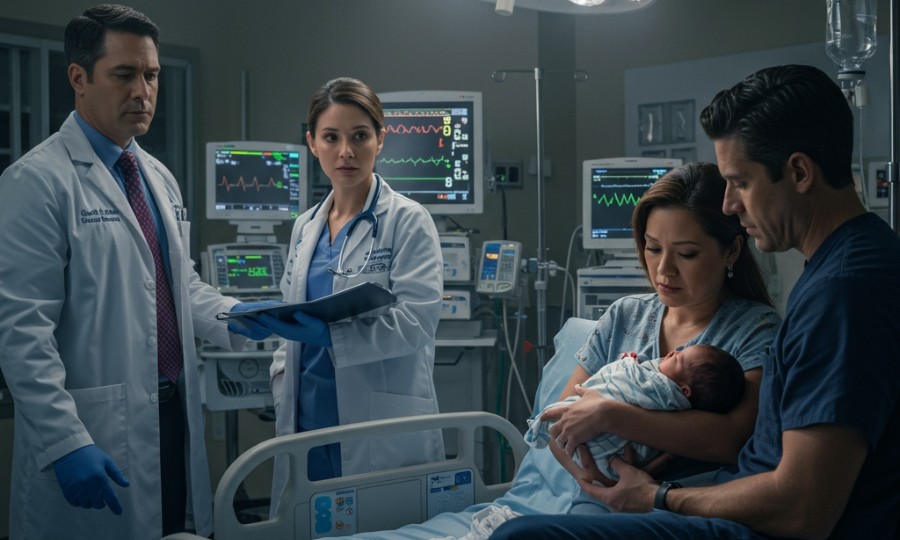
Have you ever considered the true cost of medical error? It’s more than just an abstract concept; for countless American families, it translates into a devastating, lifelong burden. Recent years have seen a startling rise in record-breaking medical malpractice settlements and verdicts across the United States, particularly in cases involving birth injuries and mismanaged patient care. These outcomes don’t just make headlines; they underscore a critical truth about the severe human and financial costs of negligence within our healthcare system. We’re talking about payouts that can reach into the tens or even hundreds of millions, reflecting not just a financial penalty for providers but a recognition of profound, often permanent, harm to patients.
It’s natural to feel overwhelmed by the sheer scale of these figures, but understanding what drives them is essential. These aren’t arbitrary numbers; they’re the result of meticulous legal processes designed to compensate victims for devastating losses. So, what’s behind this trend of increasingly significant verdicts?
The Rising Tide of Medical Malpractice Verdicts: What’s Driving It?
The landscape of medical malpractice litigation is constantly evolving. What we’re witnessing today is a confluence of factors contributing to larger awards. For one, there’s a growing public awareness of patient rights and the accountability healthcare providers owe. People are more informed, and they’re less hesitant to question care that falls short of accepted standards. Plus, advancements in medical technology, while often life-saving, also introduce new complexities and potential points of failure, increasing the stakes when something goes wrong.
Take, for instance, cases involving birth injuries. These are, without a doubt, some of the most emotionally charged and financially significant claims. When a medical error during labor or delivery leads to conditions like cerebral palsy, brachial plexus injuries, or other permanent disabilities, the impact on a child and their family is immense. The costs of lifelong specialized care, therapies, adaptive equipment, and lost earning potential for parents can quickly skyrocket into the millions. It’s not just about today’s expenses; it’s about a lifetime of needs. Don’t you think acknowledging these long-term impacts is crucial for true justice?
Understanding “Record-Breaking”: Beyond the Headlines
When we talk about “record-breaking” verdicts, Here’s what matters what these figures represent. They typically encompass several categories of damages. There are economic damages, which are quantifiable losses like past and future medical expenses, lost wages (for the injured party or their caregivers), and rehabilitation costs. Then there are non-economic damages, which address pain and suffering, emotional distress, loss of enjoyment of life, and loss of consortium (the loss of companionship from a spouse). In some severe cases, punitive damages may also be awarded, intended to punish egregious negligence and deter future misconduct, though these are less common and often capped by state law.
Consider the case of a delayed C-section. Imagine a scenario where monitoring clearly indicates fetal distress, yet a doctor or hospital staff fails to act promptly, leading to oxygen deprivation and severe brain damage in a newborn. The child will likely require round-the-clock care, specialized schooling, extensive therapies, and adaptive housing for their entire life. A jury, seeing the profound, irreversible harm and the extraordinary financial burden on the family, might award tens of millions to ensure the child’s future care needs are met. This isn’t about making someone rich; it’s about providing for a life fundamentally altered by negligence.
When Care Goes Wrong: The Impact of Mismanaged Treatment
While birth injuries often capture headlines due to their tragic nature, mismanaged care covers a broad spectrum of medical errors that can have equally devastating consequences. This includes diagnostic errors (like a delayed or incorrect cancer diagnosis), surgical mistakes (such as operating on the wrong body part or leaving surgical instruments inside a patient), medication errors, and failures to properly monitor a patient’s condition. The truth is, these errors aren’t always immediately apparent, making it even harder for patients to recognize when something has gone wrong.
We know this feels overwhelming to consider, but it’s important to acknowledge that medical professionals, despite their dedication, can make mistakes. The legal system, in these cases, steps in to hold accountable those whose errors fall below the accepted standard of care, leading to patient harm. You might be thinking that these cases are rare, but sadly, they’re more common than many of us realize. Don’t you think patients deserve clarity and recourse when their trust is betrayed by negligent care?
The Human Element: Why These Cases Matter So Much
Beyond the impressive figures, each medical malpractice case represents a human story of pain, loss, and often, incredible resilience. For victims and their families, these lawsuits are rarely about vengeance; they’re about seeking justice, ensuring accountability, and securing the resources needed to cope with life-altering injuries. The emotional toll of a severe medical error can be immense, leading to depression, anxiety, and a profound loss of trust in the medical system.
Take, for example, a middle-aged professional who experiences a delayed diagnosis of a treatable cancer. What if a doctor dismisses symptoms, leading to a year-long delay before the cancer is correctly identified, by which time it has progressed to an untreatable stage? The initial error transforms a potentially curable condition into a terminal one, robbing the patient of years of life, future earnings, and precious time with loved ones. A significant settlement in such a case would account not just for medical bills and lost income, but also for the profound loss of life expectancy and the pain and suffering endured by the patient and their family. It’s about acknowledging a future that was unjustly taken away.
Navigating the Complexities: What You Should Know
The path to a medical malpractice settlement or verdict is incredibly complex and challenging. It requires extensive investigation, expert medical testimony, and a deep understanding of both medical standards and legal precedents. Generally speaking, these cases are among the most difficult to win, often due to stringent legal requirements and the formidable resources of healthcare institutions and their insurers. This is why you’ll need an experienced legal team by your side, someone who understands the nuances of state-specific laws, including any caps on damages that might apply.
Consider a patient undergoing routine surgery who suffers a nerve injury due to a surgeon’s error, resulting in permanent paralysis in a limb. This isn’t just a physical injury; it impacts their ability to work, engage in hobbies, and live independently. Proving negligence in such a case involves demonstrating that the surgeon deviated from the accepted standard of care and that this deviation directly caused the injury. This often involves reviewing surgical records, expert witness opinions, and detailed medical analyses. Doesn’t it seem vital to have someone fighting for your rights when facing such a powerful system?
State-Specific Considerations and Legal Nuances
It’s also crucial to remember that medical malpractice laws vary significantly from state to state. Some states have caps on non-economic damages, limiting the amount a patient can receive for pain and suffering, while others do not. The statute of limitations, which dictates how long you have to file a claim, also differs. These legal nuances can dramatically impact the viability and potential outcome of a case. A knowledgeable attorney won’t just understand these laws; they’ll know how to navigate them effectively to build the strongest possible case on your behalf. They’ll help you understand if your situation even constitutes a claim.
Ultimately, these record-breaking verdicts and settlements serve as powerful reminders of the critical importance of patient safety and accountability in healthcare. They’re a testament to the legal system’s role in providing a pathway to justice for those who have suffered life-altering injuries due to medical negligence. If you or a loved one believes you’ve been a victim of medical malpractice, don’t you owe it to yourself to explore your options and understand your rights? Consulting with a qualified legal professional is always the best first step. They can assess your unique situation, explain the complexities involved, and guide you through what can be an incredibly challenging, yet necessary, process.
Free Case Consultation
Injured in an accident? Contact Rosenberg, Minc, Falkoff & Wolff for a free and confidential case review with an experienced NYC personal injury attorney.


